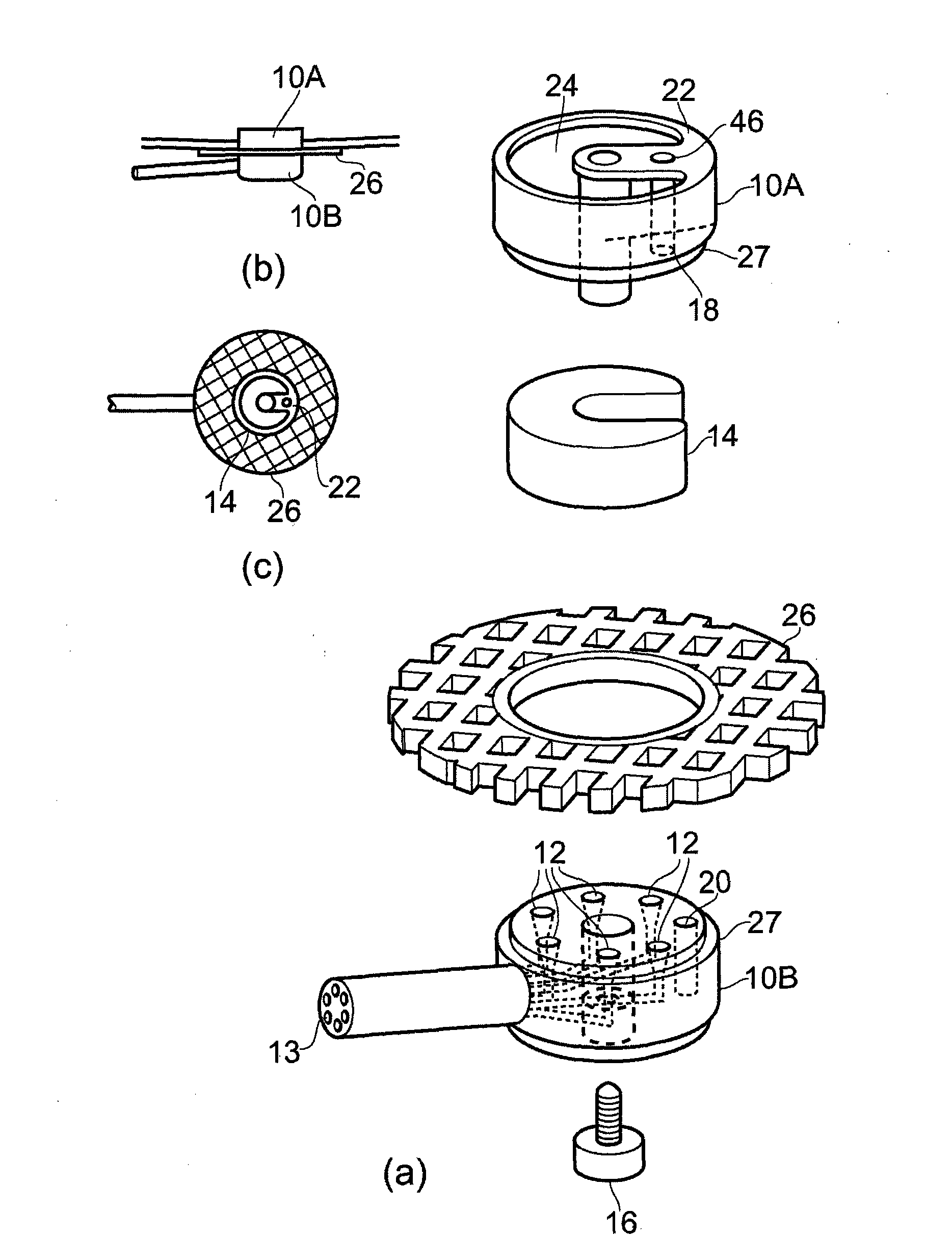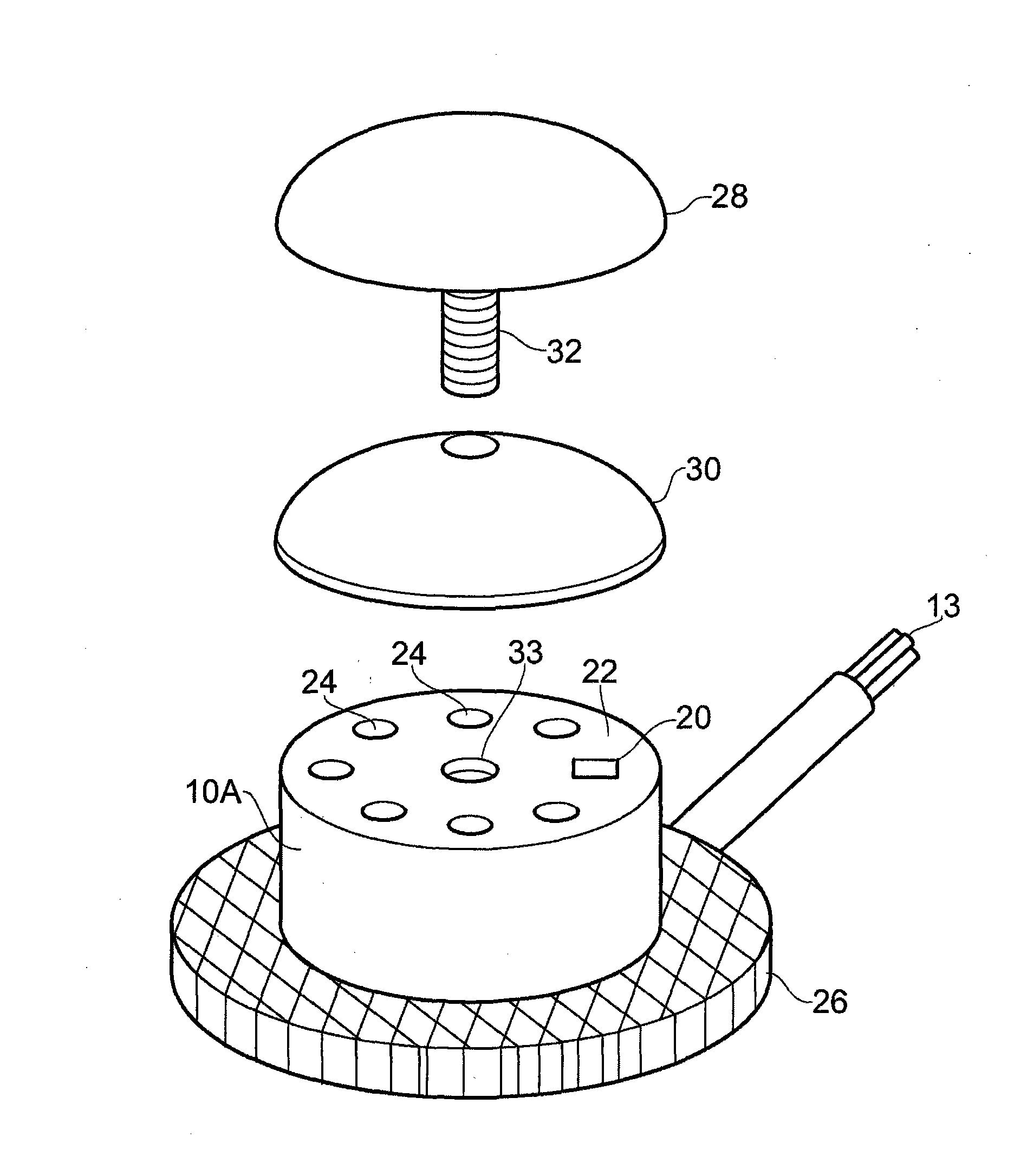Neurological apparatus comprising a percutaneous access device
A technology for accessing devices, equipment, applied in the field of neurological equipment
- Summary
- Abstract
- Description
- Claims
- Application Information
AI Technical Summary
Problems solved by technology
Method used
Image
Examples
Embodiment Construction
[0043] First refer to figure 1 , the percutaneous access device includes a main body. The main body may be formed as a single piece, or it may consist of two parts assembled together, namely an upper part 10A and a lower part 10B. In the illustrated embodiment, the lower portion 10B of the body defines a plurality of ports 12 . The body may define any number of ports, such as one port, two ports, three ports, four ports or more. In the embodiment shown, there are six ports. These ports extend into ducts 13 which extend laterally from and away from the body 10 . Such tubing can be connected to an implanted device (not shown).
[0044] To substantially seal port 12 against the ingress of microorganisms, a plug 14 is provided. A plug is positioned on top of the lower portion 10B of the body above the passageway into the port. To hold the bung in place, the upper part 10A of the body is positioned thereon and secured to the lower part of the body, for example by screws 16 . ...
PUM
 Login to View More
Login to View More Abstract
Description
Claims
Application Information
 Login to View More
Login to View More - R&D
- Intellectual Property
- Life Sciences
- Materials
- Tech Scout
- Unparalleled Data Quality
- Higher Quality Content
- 60% Fewer Hallucinations
Browse by: Latest US Patents, China's latest patents, Technical Efficacy Thesaurus, Application Domain, Technology Topic, Popular Technical Reports.
© 2025 PatSnap. All rights reserved.Legal|Privacy policy|Modern Slavery Act Transparency Statement|Sitemap|About US| Contact US: help@patsnap.com



